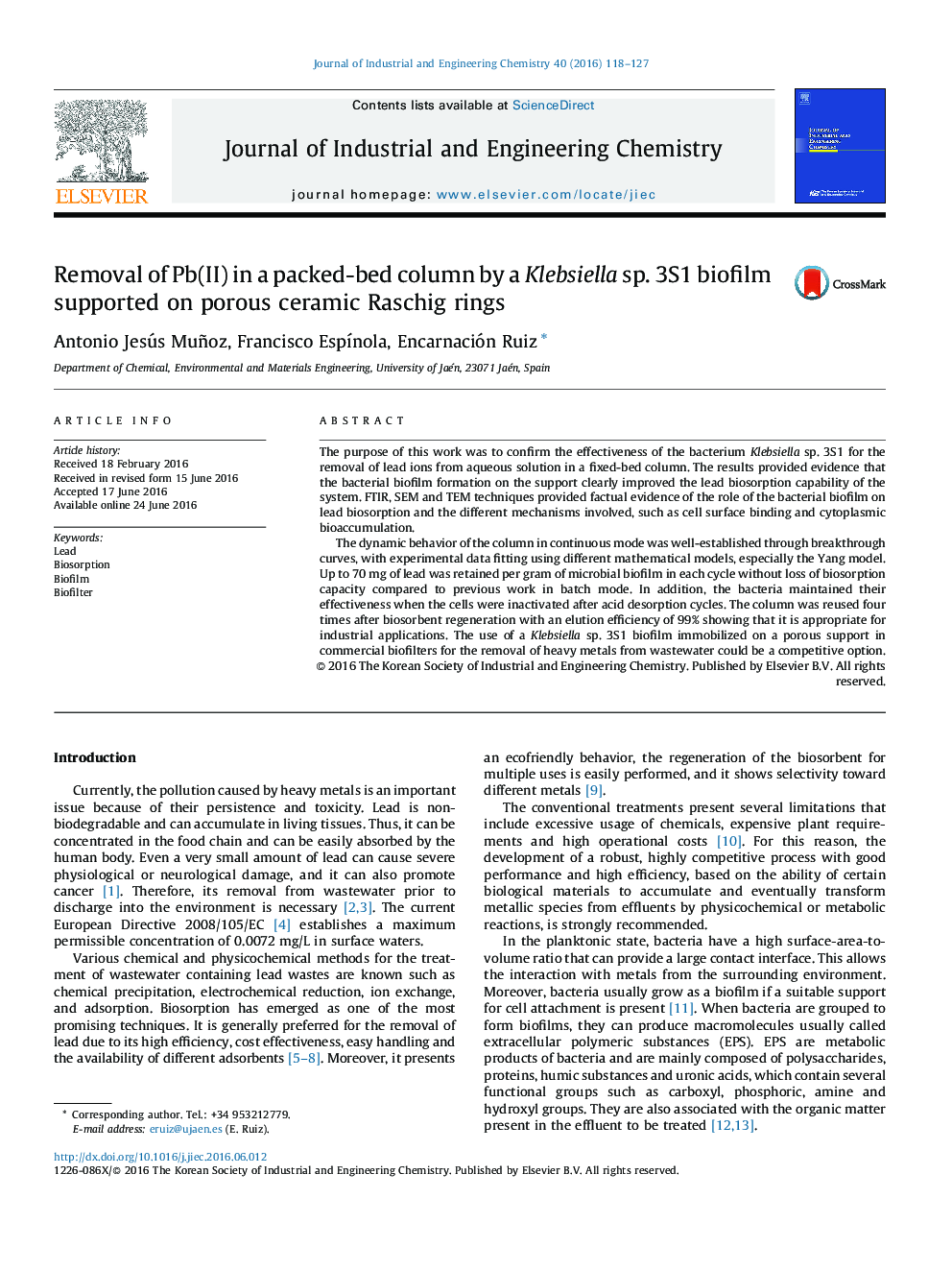| Article ID | Journal | Published Year | Pages | File Type |
|---|---|---|---|---|
| 226688 | Journal of Industrial and Engineering Chemistry | 2016 | 10 Pages |
The purpose of this work was to confirm the effectiveness of the bacterium Klebsiella sp. 3S1 for the removal of lead ions from aqueous solution in a fixed-bed column. The results provided evidence that the bacterial biofilm formation on the support clearly improved the lead biosorption capability of the system. FTIR, SEM and TEM techniques provided factual evidence of the role of the bacterial biofilm on lead biosorption and the different mechanisms involved, such as cell surface binding and cytoplasmic bioaccumulation.The dynamic behavior of the column in continuous mode was well-established through breakthrough curves, with experimental data fitting using different mathematical models, especially the Yang model. Up to 70 mg of lead was retained per gram of microbial biofilm in each cycle without loss of biosorption capacity compared to previous work in batch mode. In addition, the bacteria maintained their effectiveness when the cells were inactivated after acid desorption cycles. The column was reused four times after biosorbent regeneration with an elution efficiency of 99% showing that it is appropriate for industrial applications. The use of a Klebsiella sp. 3S1 biofilm immobilized on a porous support in commercial biofilters for the removal of heavy metals from wastewater could be a competitive option.
